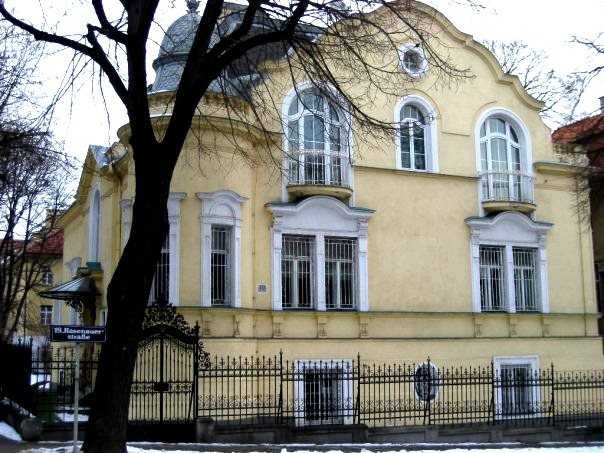
Wake Forest University is honored to commemorate the 25th anniversary of Flow House, our study abroad home in the prestigious 19th district of Vienna. Since opening in fall 1999, Flow House has served as an academic center and beautiful residence to more than one thousand alumni, resident professors and their family members.
Throughout academic year 2024-2025, we are delighted to gather alumni memories and celebrate the Flow House experience. The anniversary celebration will culminate with a memorable alumni reunion in Vienna, May 29-31, 2025.
We invite you to share your stories and make plans to reconnect as we welcome you back home to Flow House.
How can I engage?
- Share memories from your time at Flow House to contribute to the Global Programs Archive. Send stories, reflections and photos to globalevents@wfu.edu.
- View the Schedule of Events and mark your calendar for May 29-31, 2025. Begin making travel arrangements to join the reunion events in Vienna!
- Update your Alumni profile to add your study abroad experience.
- Login to Wake Network. Select the edit icon next to “Education,” click “Add involvement,” then select “Study Abroad: Flow House Vienna.” Study abroad involvement is searchable by other alumni, so you can reconnect with Wake Foresters who were a special part of your study abroad experience. Speaking of…
- Reach out to friends who were a special part of your time at Flow House to connect and encourage them to update their alumni contact info, as well!
History of the Flow House
Wake Forest purchased the magnificent three-story villa in Vienna in 1998. The acquisition was made possible through the generous donation of Vic and Roddy Flow of Winston-Salem and the House was named in their honor. The house was built between 1896 and 1897 for Otto Schleiffelder, the head of a noted Viennese optical firm, and his family. The architect was the Austrian Hermann Mueller, who figured prominently in the expansion of the conceptual framework underlying the building of houses in the “Cottage Quarter” (Cottage Viertel) shared between the districts of Waehring and Doebling. The original plan had been to build relatively simple, freestanding one family houses. Mueller kept the concept of a single, freestanding house, but added opulence and considerably more room for both for family and live-in staff. The house, known as the Villa Schleiffelder, was one of the first of the newer, bigger houses and was a showpiece for the concept (Thanks, Hermann!). The house remained in the possession of the Schleiffelder family for several decades. Roughly 20 percent of the houses in the Cottage Quarter were destroyed or seriously damaged during Allied bombing raids during the Second World War, but the Villa Schleiffelder escaped largely intact. It was purchased by the United States Embassy in 1950.

